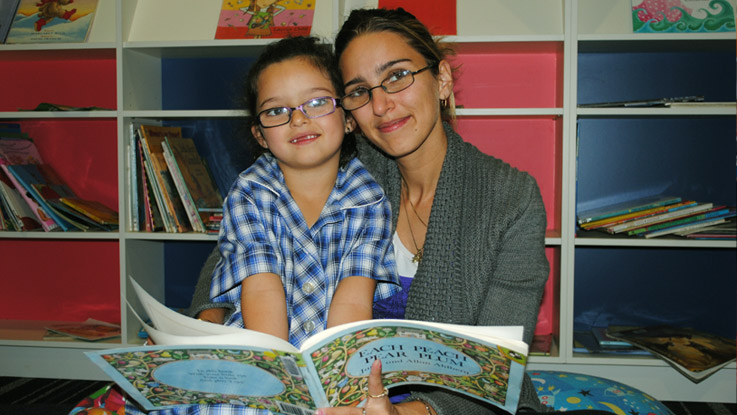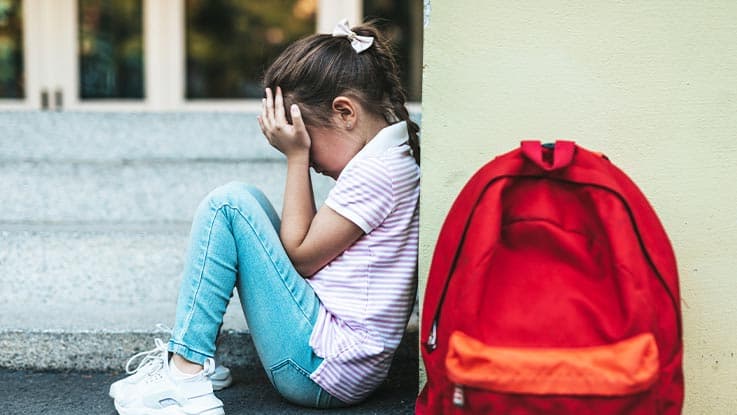
Now is the time to tackle child poverty as a national priority

We need a comprehensive national framework for reducing child poverty, writes Doug Taylor, who reflects on the impact poverty has on children’s educational outcomes.
I missed out on a lot of things. At school, I had to borrow books and stationery. Teachers would bring stuff from home or I would borrow from other classmates. I just never had my own stuff. I remember at one point I even had to borrow a uniform from the school and return it at the end of the year, which left me to be bullied. Everyone would pick on you because you didn’t have anything.
Dough Taylor
Chief Executive Officer at The Smith Family
In Anti-Poverty Week let’s remind ourselves of the challenge at hand. 1.2 million children and young people live in poverty in Australia. That’s one in six.
When you mention poverty, it’s true that many of us probably imagine images of desperate people, often in countries a lot poorer than our own. There’s more to be done in supporting people globally as well as acknowledging that fact.
But poverty in Australia looks quite different. While there are people facing material deprivation, it can also look like Jack’s experience. It’s the kind of poverty that means some children are already behind in their ability to engage in their learning, before they even walk through the school gate. Sadly, and without the right type of support, this experience can persist so that they never really feel like they belong.
In my first weeks as the new CEO of Australia’s largest education charity, I’ve been struck by the resilience of the students and families that we work with, given what many of them are up against. They were struggling before COVID – and COVID just exacerbated their pressures.
The pandemic has shone a spotlight on existing educational inequities, including how some parents lack the confidence and skills to help children with their learning, or even to be able to provide dedicated spaces for them to work. Despite this, they keep telling us they want the best for their children and see education as an important pathway for a positive future.
One of the biggest challenges since lockdowns started has been addressing the digital divide. At the start of COVID last year, almost a quarter of the 58,000 students on our Learning for Life educational support program didn’t have access to a computer or device at home connected to the internet, which would allow them to fully participate in remote learning. Those who did were often sharing one device, sometimes a smartphone, between multiple siblings.
Many of us know first-hand, or through others, the very real challenge of home schooling but imagine doing this under these conditions. Think about how you would feel if these were your own children?
With the help of our supporters, we’re chipping away at the digital divide. And there have been great efforts by education departments in several States providing children in need with technology and devices as a priority.
We won’t know the long-term impact of prolonged lockdowns and periods of remote learning on students for some time. But we do know how we can best help.
While our sector partners address key issues like adequate income support, access to safe and secure housing, mental health and psychological distress in our young people, we’re focusing on providing the right educational support, at the right time, to those students who were already behind in their learning before the pandemic hit.
The focus needs to be on developing long-term, evidence-based solutions that work – like building on promising trials of online tutoring for students already struggling with literacy and numeracy, given its importance for longer-term educational outcomes.
But let’s finish as I began – on those staggering numbers – and what’s needed to turn them around. Australia is not on track to meet its commitment under the UN Sustainable Development Goals, to reduce our rate of poverty by half by 2030.One of the fundamentals needed to address this is for Australia to have an official national poverty line, which it currently doesn’t.
We need a comprehensive national framework for reducing child poverty, with targets and publicly reported figures so we can measure it over time and determine which policies are most effective.
Now is the time to tackle child poverty as a national priority. Let’s not go back to business-as-usual as we recover from COVID, when we have an opportunity to make things better.
Children like Jack should never have to miss out through no fault of their own. Let’s see what we can achieve when we work together to make it happen. We can’t afford not to.
About the author: Doug Taylor joined The Smith Family as CEO in August 2021. He has built a 25-year career in the social sector. Doug is a Director of the Australian Centre for Social Innovation, WorkVentures and Chair of Warakirri College – a school for disengaged young people in Western Sydney.
Originally published 20th October, 2021 on ProBono Australia
